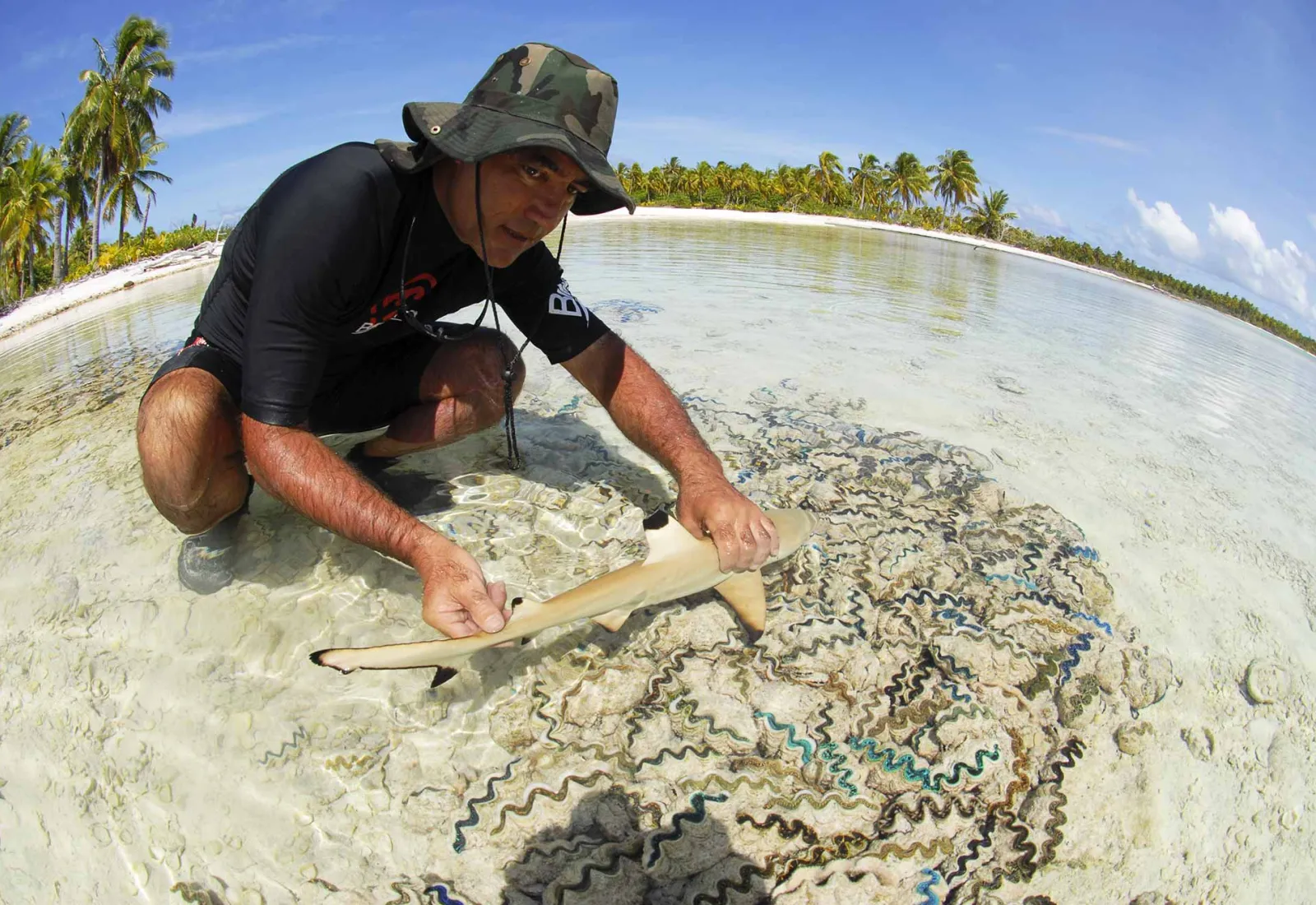It is hard to imagine that these small and vulnerable creatures will become one of the ocean's greatest predators and will play an essential role in the coral reef ecosystem.
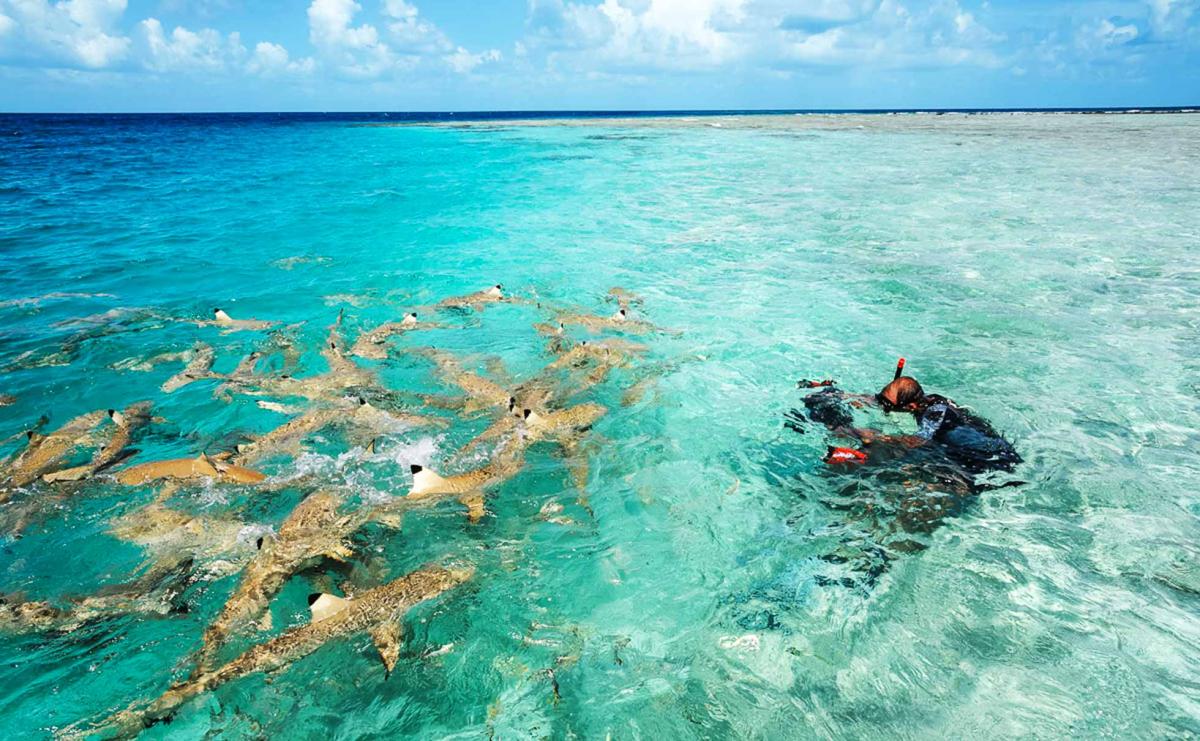
Photo credit: S. Girardot
French Polynesia is a privileged site for shark watching. Out of 350 species, around 20 are represented across the 5 archipelagos. This vast territory offers these specimens a hunting ground of an area of 5 million km2 with a great diversity of environments: from the high island to the atoll. Polynesian waters still remain a territory whose state of preservation is exceptional. Sharks are here in their sanctuary, especially since he has been protected since 2006.
These days at sunrise or sunset you can easily observe baby sharks swimming along the beaches of Tetiaroa, the shallow water protecting them from large predators. It is hard to imagine that these small and vulnerable creatures will become one of the greatest predators of the oceans and also a fundamental element in the coral reef ecosystem.
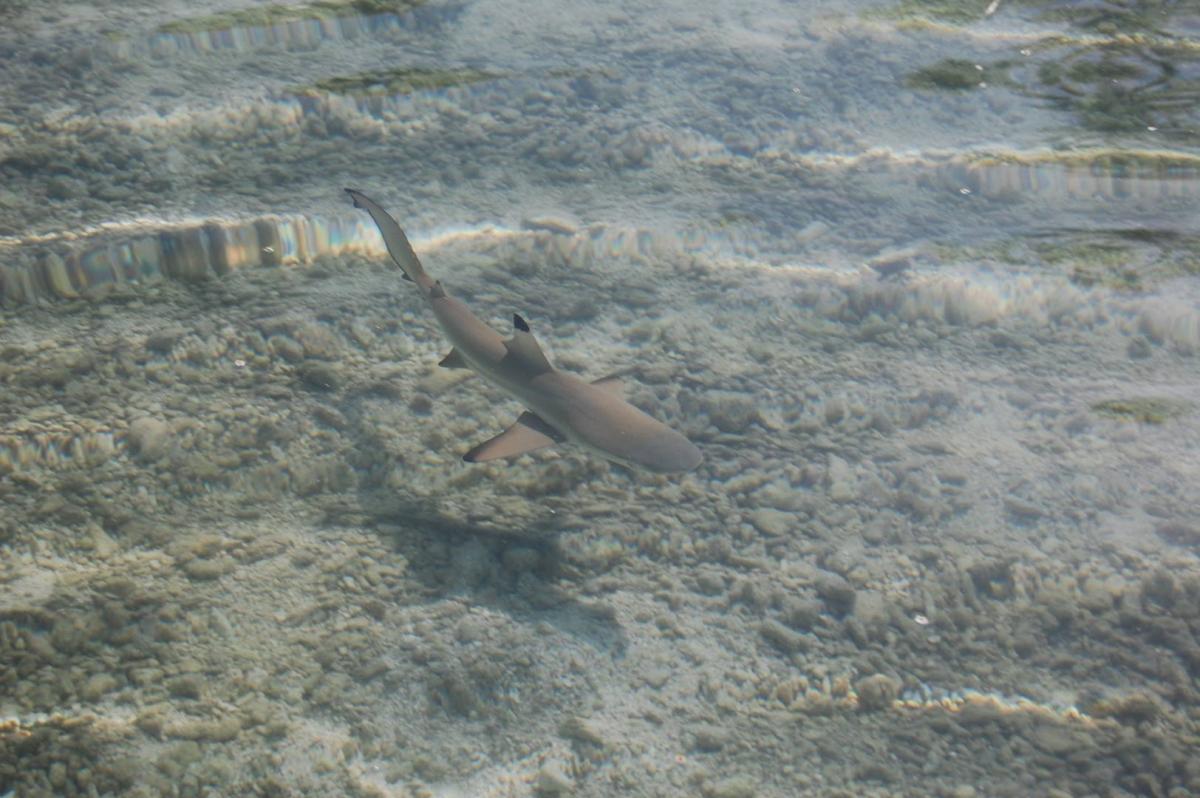
Blacktip cruising the Tetiaroa lagoon
The most common species on Tetiaroa are black tip sharks and lemon sharks. In fact the atoll is a nursery habitat for these two species. The female sharks use "hoa", water passages between two motu, as birthing sites. These species are viviparous (birthing live young), each female black tip producing up to 4 babies, and lemon sharks producing up to 12 young.
Birthing and Reproduction
In the super-class of fish, the breeding strategy is usually quantitative with an extremely high rate of loss. In fact, fish lay millions of eggs, most of which are immediately eaten by other fish. Sharks, which are cartilaginous fish, ranks in the same way as the rays in the subclass of the Elasmobranchs (with lateral gill slits (sharks) and ventral (rays).) If rays are oviparous, sharks, have a more diverse mode of fecondation. Depending on the species, sharks may be oviparous, ovoviviparous or viviparous.
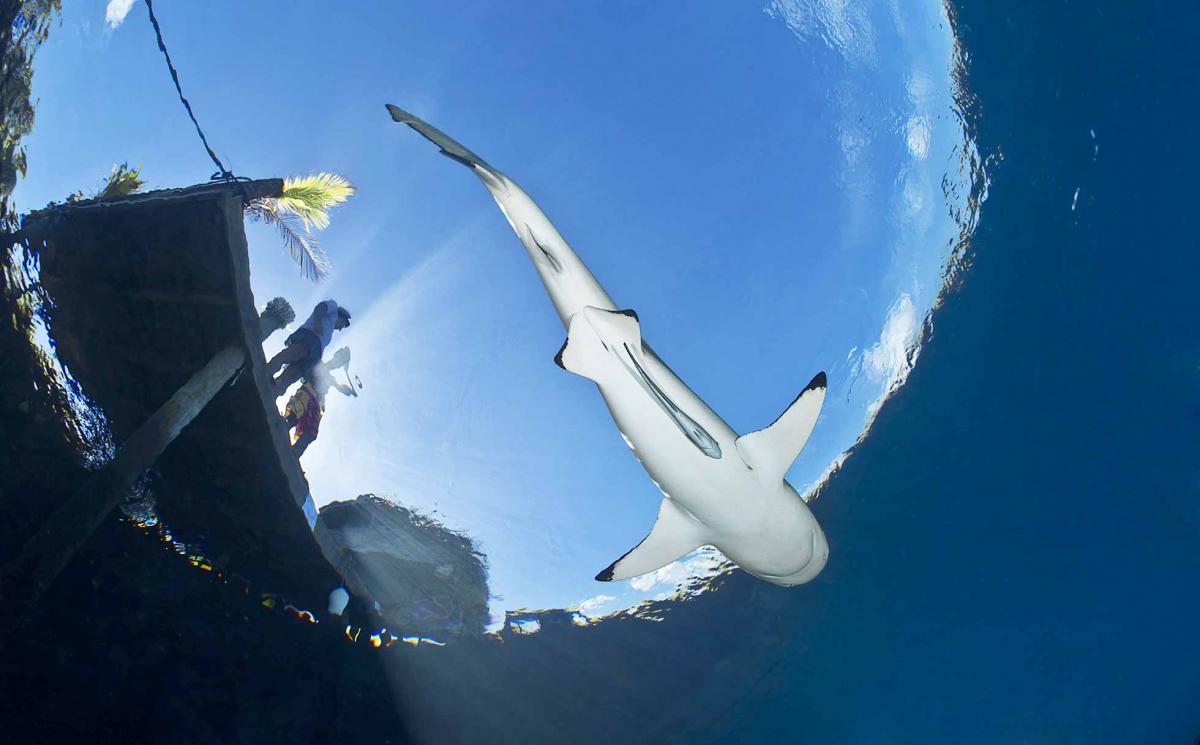
Photo credit: S. Girardot
Mating
Among sharks and rays, dimorphism is obvious. The male has two sexual organs, called pterygopods, which are linked to the pelvic fins.The female emits a trail of pheromones which attracts the male. The male clings to the female with the help of his jaw. The male literally bites the female during the courtship, precisely, the latter has a thicker skin. Mating can last 2 to 35 minutes; the female leaves with beautiful marks in memory of this embrace.
Anatomy and adaptation
Sharks are often referred to as a primitive animal. Although they have dominated the oceans for 350 million years, they are especially endowed with a perfect adaptation to their environment evrsince they have existed. Their body is totally hydrodynamic and their skin is covered with thousands of denticles that promote sliding. They have a voluminous liver, it is filled with an oil lighter than the water, giving them a better buoyancy and very fast vertical movements.Their different fins are made of cartilaginous fibers attached to the spine which give them an exceptional propulsion and maneuverability .
The keen senses of sharks make them outstanding predators, they have unique abilities in the animal kingdom.
Their sight allows them to see in the darkness and also has a reflective power. Shark requiem has an additional membrane that protects the eye in case of bite.
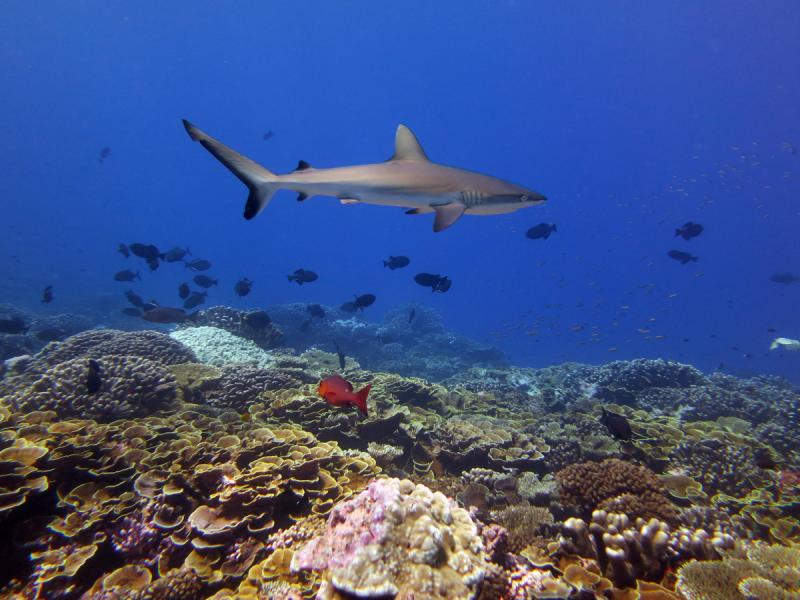
Photo credit: Mark J. A. Vermeij
The odors come to them via the water flowing in his nostrils. The chemical substances diluted in water are transformed into electrical impulses transmitted to the brain. The lemon shark can detect 10 drops of tuna blood in 5250 m3 volume of water. He also uses this olfactory sensitivity to identify female pheromones. Sharks' ear is invisible, it is connected to the water by tiny pores at the top of their head. It captures the sound vibrations of a wounded animal more than 2 km away. Sharks are traversed by a lateral line connected to their inner ear, the "acoustico-lateral" organ that also allows them to feel the movement of water around them, giving them the ability to assess the size and the agility of fish that surround them.


